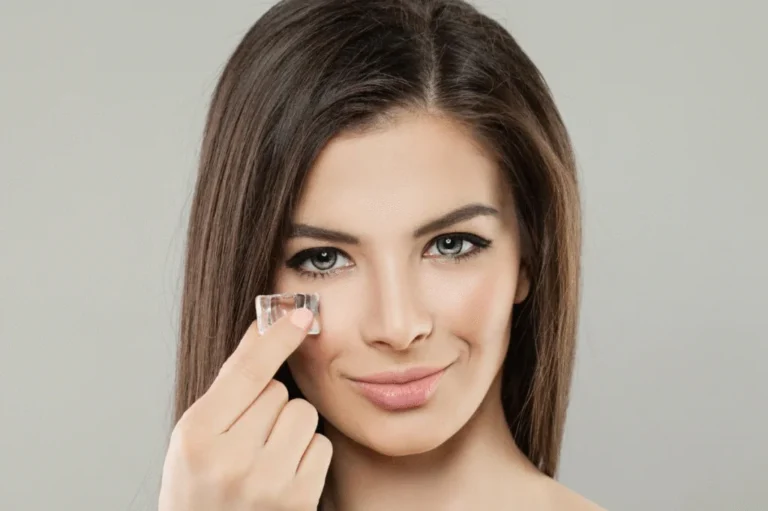How to Track Your Skin-Hormone Cycle Using a Simple Journal
If you’ve ever noticed your skin acting up around your period, experiencing mid-cycle breakouts, or experiencing dullness that comes and goes in a predictable pattern, it’s not just a coincidence. Your hormones directly impact your skin health, and learning to track this cycle can provide you with the insight and control you’ve been seeking.
Hormonal fluctuations can affect various aspects of the skin, including oil production, collagen levels, and inflammation, as explained by Dr. Shereene Idriss, a board-certified dermatologist and founder of Idriss Dermatology in New York City.
What Is the Skin-Hormone Cycle?
Your menstrual cycle hormones, including estrogen, progesterone, and testosterone, fluctuate over four distinct phases, and your skin undergoes changes in response to these fluctuations. By documenting your symptoms and identifying triggers, you can gain insights into predicting and managing skin issues before they escalate.
The 4 Phases & Skin Effects:
- Menstrual (Days 1–5): Lower estrogen = dryness, dullness, inflammation
- Follicular (Days 6–14): Rising estrogen = glow, improved elasticity
- Ovulation (Day 14): Peak estrogen/testosterone = oily skin, possible breakouts
- Luteal (Days 15–28): High progesterone = clogged pores, hormonal acne
What the Research Says
A 2022 study published in the Journal of Clinical and Aesthetic Dermatology revealed that a significant portion of women, approximately 67%, experience cyclical acne or skin changes that are closely associated with their menstrual cycle. The study underscores the importance of incorporating cycle-based skincare routines into one’s regimen to effectively manage breakouts and alleviate dryness.
Another 2020 NIH-backed meta-analysis revealed that estrogen stimulates collagen production and aids in wound healing, while progesterone tends to increase sebum (oil) and inflammation in the skin.
How to Start Tracking For Free
Keeping a daily journal helps you connect symptoms to hormonal patterns. You can use a physical notebook or this free Google Sheets Skin-Hormone Cycle Tracker Template. If you’d like me to create one, let me know.
What to Track Each Day:
- Skin status (e.g., clear, oily, dry, breaking out)
- Location of breakouts (chin, cheeks, forehead—these hint at hormonal issues)
- Mood and energy levels
- Diet and hydration
- Sleep quality
- Menstrual cycle day (or app sync)
Expert Tips for Each Cycle Phase
Menstrual Phase (Days 1–5)
- Use gentle, hydrating cleansers and barrier-supporting moisturizers
- Avoid over-exfoliating—your skin is more sensitive
- Focus on hydration and recovery
Follicular Phase (Days 6–14)
- This is your “glow phase”—maximize it with brightening serums (like Vitamin C)
- Light exfoliation is OK here
- Try facial massages or gua sha to enhance circulation
Ovulation (Around Day 14)
- Watch for sudden oiliness or whiteheads
- Add clay masks or salicylic acid to control excess oil
- Be gentle with active ingredients to prevent irritation
Luteal Phase (Days 15–28)
- Hormonal acne tends to strike—use benzoyl peroxide or sulfur spot treatments
- Avoid heavy makeup that clogs pores
- Focus on anti-inflammatory ingredients like niacinamide or green tea extract
Why This Matters
Hormonal acne and skin shifts can feel random and frustrating. But when you start tracking your patterns, you unlock the ability to:
- Personalize your skincare routine
- Time treatments with your skin’s needs
- Understand root causes instead of just treating symptoms
- Communicate more clearly with dermatologists or hormone specialists
Dr. Jolene Brighten, a functional medicine hormone expert, emphasizes the empowering nature of tracking hormonal cycles. This practice empowers women to gain a deeper understanding of their bodies and gain control over their skin health.
Tips to Support Skin During Hormonal Changes
- Eat a high-fiber, low-sugar diet to support hormone detox via the liver and gut
- Stay hydrated—especially in luteal and menstrual phases
- Consider supplements like zinc, DIM, or omega-3s (consult a doctor first)
- Prioritize sleep—your skin regenerates at night
Track, Tweak, Transform
Your skin isn’t unpredictable; it simply follows your hormonal fluctuations. By dedicating just two minutes daily to journaling, you can decipher your cycle and develop a skincare routine that harmonizes with your body’s needs, rather than opposing them.
Check out the healthlynic ✔️approved range of products for Weight Loss, Improve metabolism and much more!







